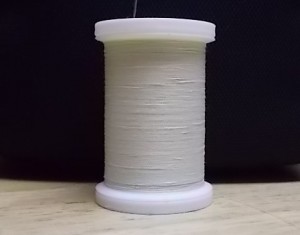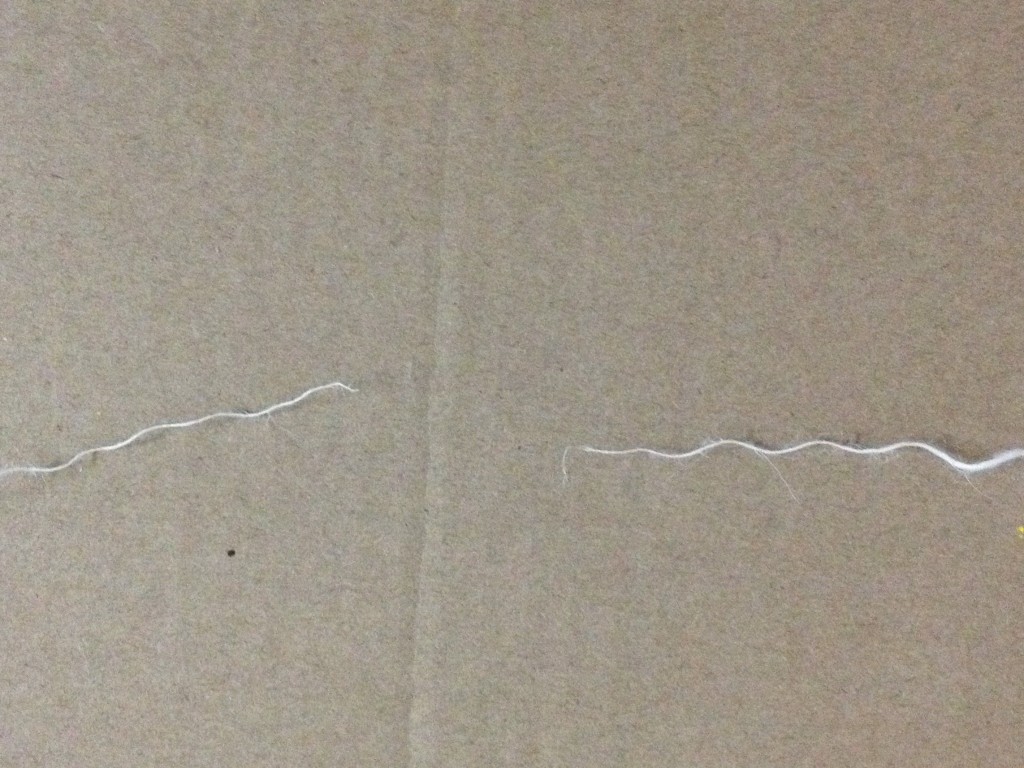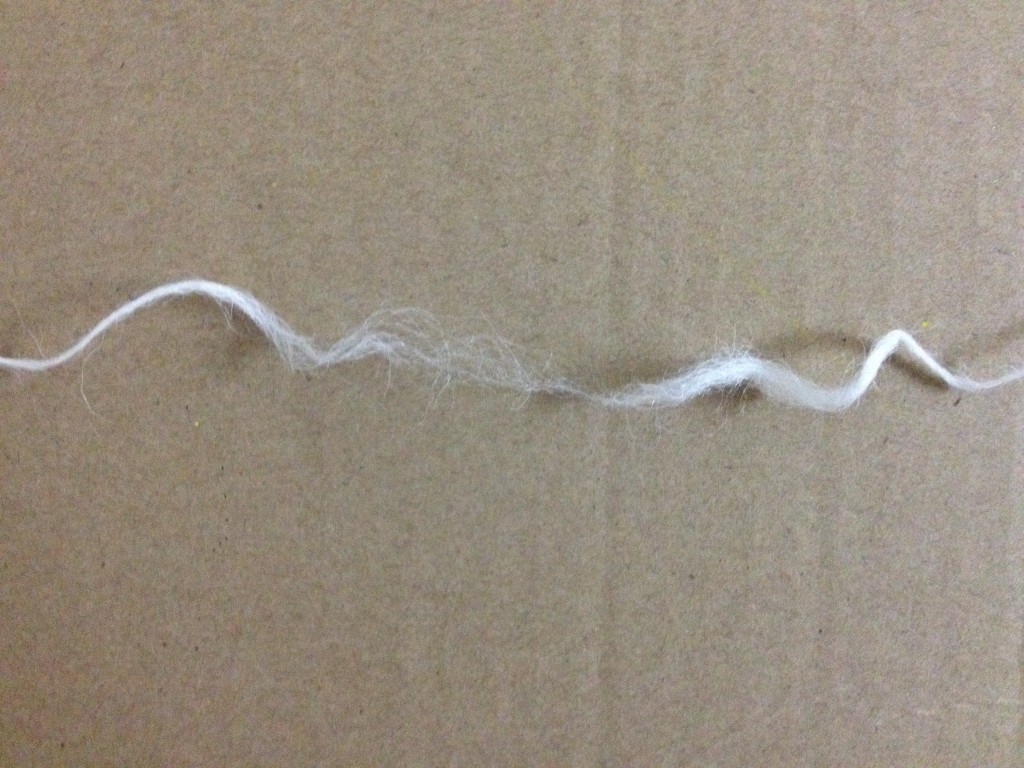Now that you all have some background on spinning (if you are new to the blog, see the previous post) I can begin to relate my struggles to produce quantities of quality thread. Spinning thread for the project will be an ongoing process as I will need to weave many practice pieces before getting a piece of cloth that is well made and sturdy enough to be dyed. I will also probably waste a lot of thread through mistakes.
Once I got the bugs worked out and finally started, I realized very quickly that achieving the same level of quality as the spinners who made the the thread for the Wari fragment was not too difficult for an experienced spinner.
What is extremely difficult is producing it on a consistent basis for HOURS at a time. Drop spindles are not a really efficient way of producing thread by hand so you have to spin for long periods of time. I can average an hour before my hand hurts and I have to stop. I also couldn’t maintain the level of control required for the finest thread, so some areas are uneven (with an occasional lump!)
Figuring out the process (my knowledge at this point)
Although I am an experienced spinner and used to working with a drop spindle (I have actually never learned to work a spinning wheel) I have never before tried to make the equivalent of sewing thread.
The first question I had to answer was “How thin is too thin?” One limitation on how fine your thread can be is the amount of fiber you can feed to the drop spindle without losing control of it and without it breaking.
During my own process of trial and error I discovered that the thickness of the final thread will depend on the weight of the spindle, on your hand strength, and on the fiber staple. My spindle is a little too heavy for the alpaca I am using for this project so I will have to be satisfied by a slightly thicker thread than I wanted. The fiber staple of this alpaca is also slightly longer than I would like because I have very small hands. This means that if I am drafting the fiber down to the spindle, the maximum distance I can separate fibers is about 3 inches. Because the fibers are very thin they slip past each other easily but still….
The strength of your hands is also a crucial factor, particularly your thumb and forefinger. I quickly discovered that the only way to pull a tiny bunch of fiber out of the clump I was holding in my right hand was to use my thumb nail to thin out and control the fiber my other fingers were pushing forward
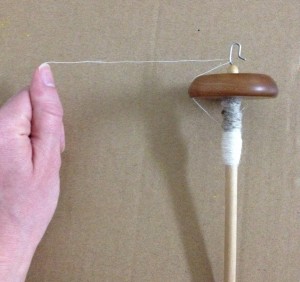
It’s hard to get good photos of spinning but here is a demonstration of the position. You have to use your thumbnail almost more than your fingers to thin out the fiber
There is also the issue not just for this project, but in drop spinning generally of how long you can spin for before the spindle hits the floor. I am a short person and since I like to spin sitting down I have to continually stop to wind the thread up which breaks your concentration. Maybe that’s why I end up with so many lumps…
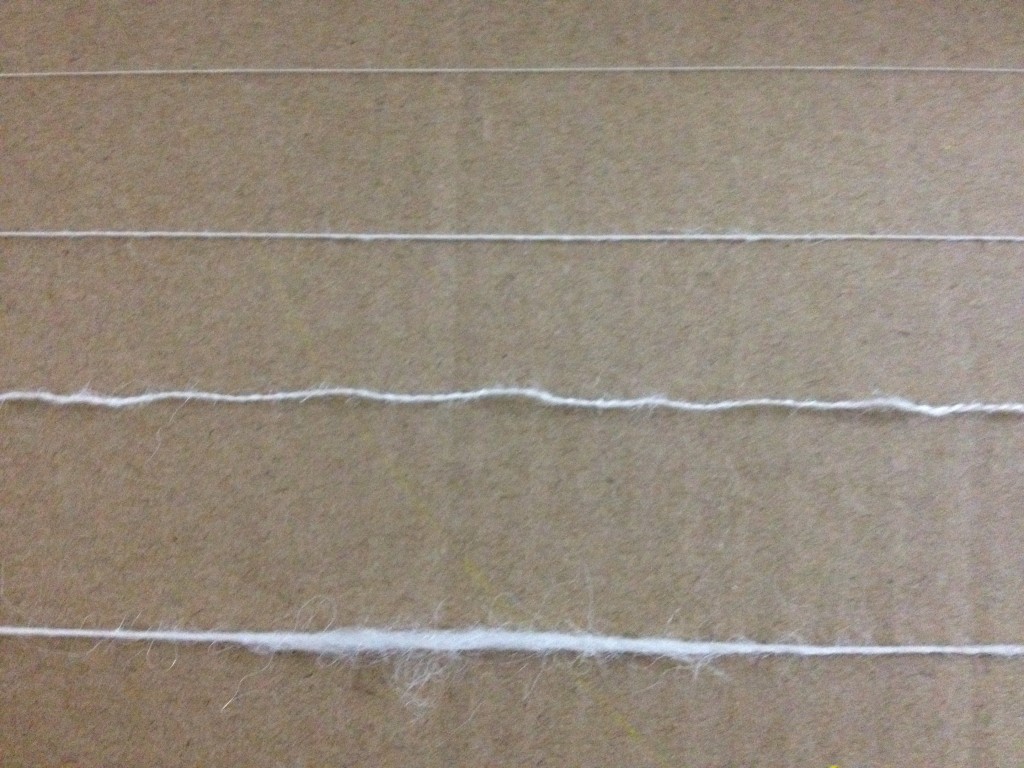
Here is a demonstration of my progress. The top thread is commercially made, the middle thread is my own thread on a good day, the third is my thread plyed (I’ll get to that in the next post) and the last is my thread on a bad day
Instead of a quiz there are two poll questions on the next page. I’ll give the answers in the next post
Thanks to the people who took the last quiz, I saw that there was something I had not done a good job phrasing!
[gallery_ids=”3″]


